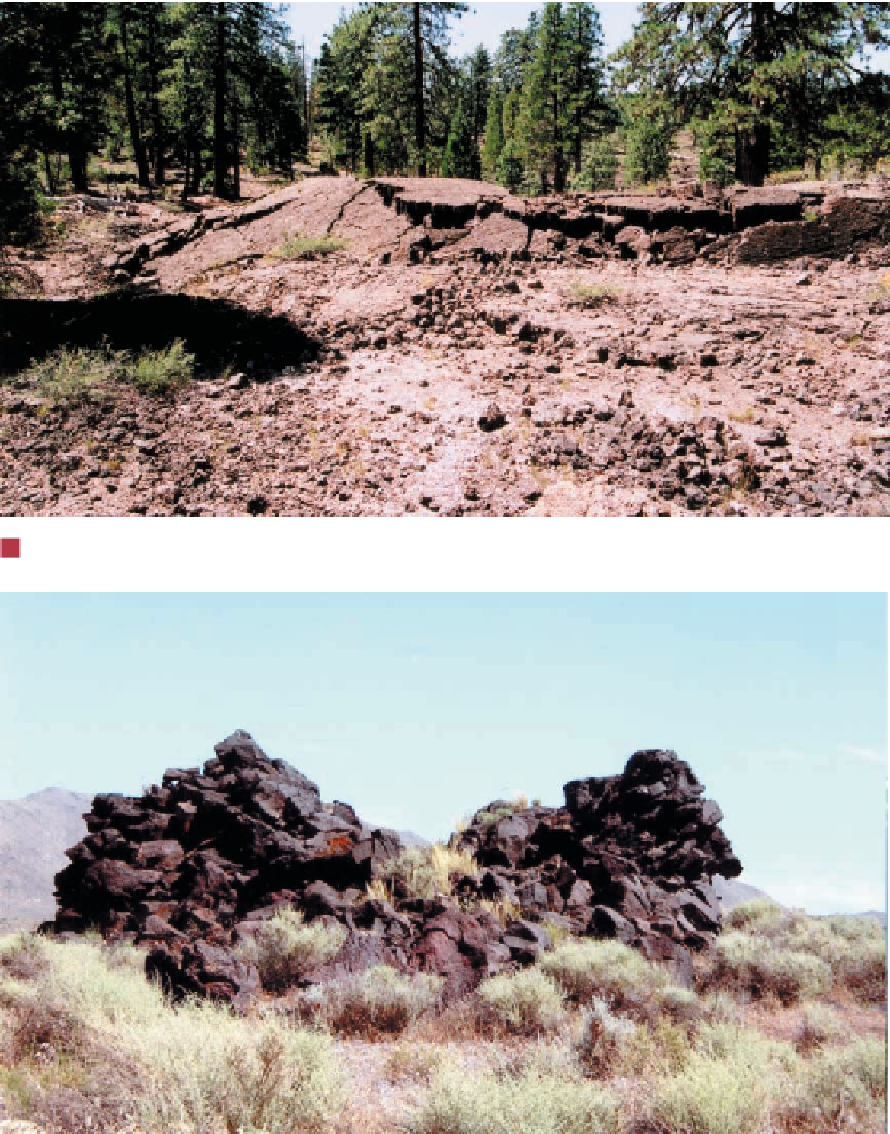Geology Reference
In-Depth Information
◗
Figure 5.5
Pressure Ridge and Spatter Cones
a
The buckled surface of this lava fl ow on Medicine Lake Volcano in California is a pressure
ridge. It formed when the solidifi ed surface of a lava fl ow was bent upward by a still-moving fl ow beneath.
b
These two chimney-like pillars of rocks are spatter cones on the surface of a lava fl ow
in the Coso volcanic fi eld of California.
80 aircraft have been damaged when they encountered clouds
of volcanic ash. The most serious incident took place in 1989
when ash from Redoubt volcano in Alaska caused all four jet
engines to fail on KLM Flight 867. The plane, carrying 231
passengers, nearly crashed when it fell more than 3 km before
the crew could restart the engines. The plane landed safely in
Anchorage, Alaska, but it required $80 million in repairs.
In addition to volcanic ash, volcanoes erupt
lapilli
, con-
sisting of pyroclastic materials that measure from 2 to 64 mm,
and
blocks
and
bombs
, both larger than 64 mm (Figure 5.8).
Bombs have a twisted, streamlined shape, which indicates that
they were erupted as globs of magma that cooled and solidi-
fi ed during their fl ight through the air. Blocks, in contrast, are
angular pieces of rock ripped from a volcanic conduit or pieces


Search WWH ::

Custom Search